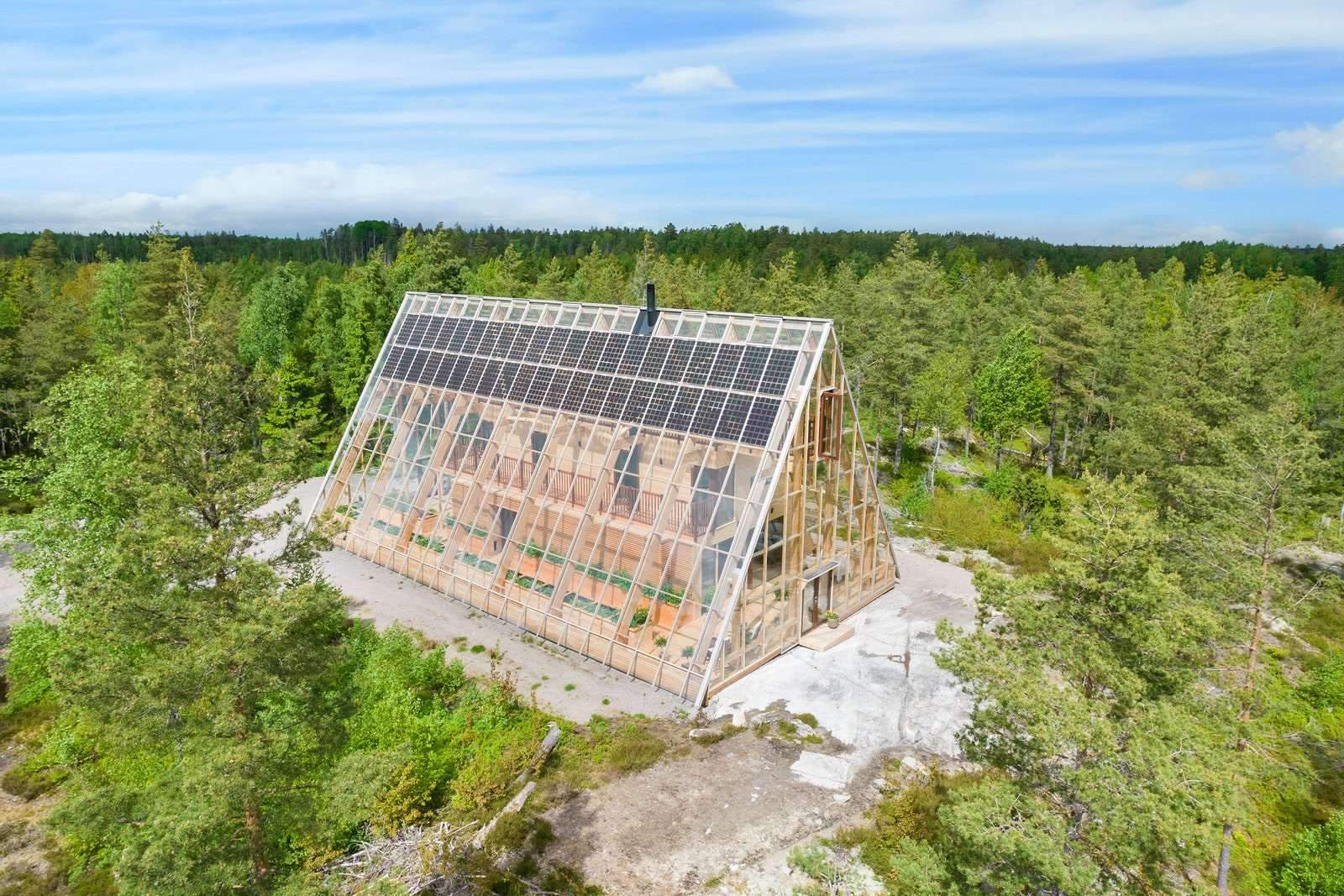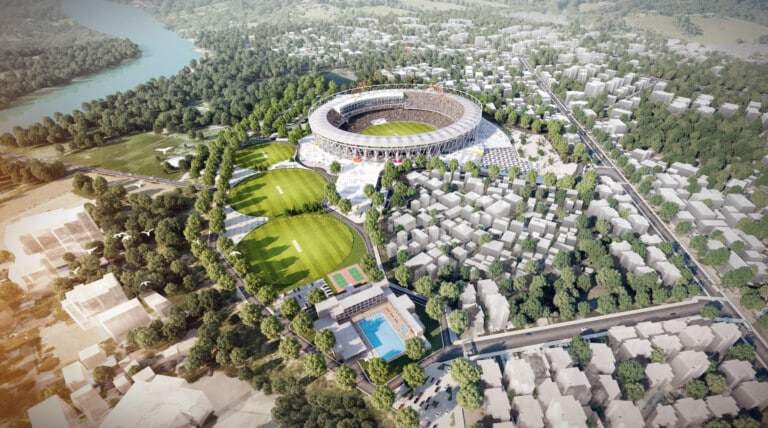The southwestern shores of Lake Vänern, the largest body of water in Sweden and one of the most popular camping destinations in Scandinavia, are shrouded in a thick forest of conifer trees with nary a bank or grocery store within miles. In this landscape of summer getaway, an A-frame home of unprecedented scale and material composition has recently touched down across nearly a half acre that is wholly unlike the string of campgrounds and cottages lining the lakeshores just out of view.
The first home completed by Naturvillan, a Sweden-based architecture firm recently founded by Anders Solvarm and Niklas Dahlström, Atri combines a crystal clear material and structural expression with a minimal environmental impact. The pointed geometry and pine tones of the surrounding trees are incorporated in the home’s striking outward presence, where two soaring walls of glass lean against one another to reveal an interior almost entirely composed of timber. At night, the glow of solar-powered lighting radiates from the home outward to illuminate the shrubs just beyond its perimeter.
Though an all-glass, primarily open-plan home may appear inefficient to heat and cool year-round (especially within a Scandinavian climate), the expansive volume is equipped with enough methods of passive cooling (including operable windows and vents for cross ventilation) and off-grid energy-efficient devices to have more than enough energy to spare. During the summer, the solar cells on the long walls of the A-frame power the internal battery that runs all of the home’s electrical and water heating systems, while a relatively old-fashioned wood-fired kitchen oven provides heat and hot water during the grayer months.
The vast three-story atrium (from which the name of the home derives) was conceived as both an enclosed wrap-around porch—complete with a dining table and lounge spaces sheltered from the lakefront winds—as well as a greenhouse that blurs the distinction between the interior and the great outdoors. A long row of plant beds runs along the entire south-facing wall and purifies the air and grows fruits, vegetables, herbs and spices with little maintenance, thanks to a base irrigation system with water supplied by a drilled well on the property.
The central interior of the ground floor is designed as a succession of common spaces to provide consistent views of the outdoors (save for a small skylit bedroom just off to the side of the hallway). A long galley kitchen with ash countertops runs parallel to the plant beds for easy access when the produce is ready for harvest and leads to the main common space, which itself is separated from the “porch” by a sliding glass door that further blurs the indoor/outdoor distinction.
The first flight of stairs leads to a slightly smaller floor plan with an open office and the main bedroom, both of which have direct access to an interior balcony overlooking the greenhouse, while a second, treehouse-like flight leads to a narrow rooftop deck that gracefully extends across the entire atrium. Just below the apex of the structure, the deck maintains miles-long views of Lake Vänern obscured only by conifers.





